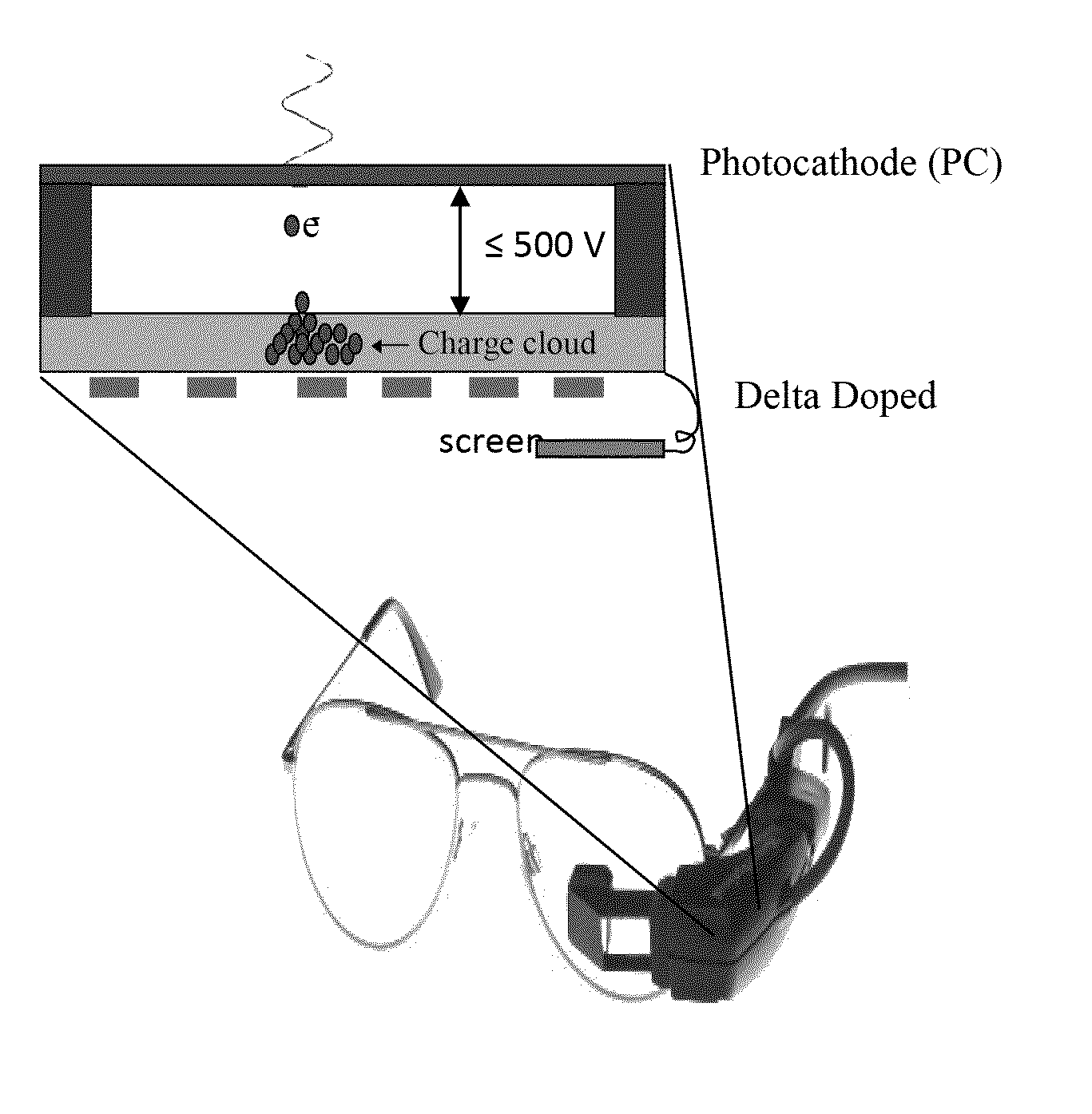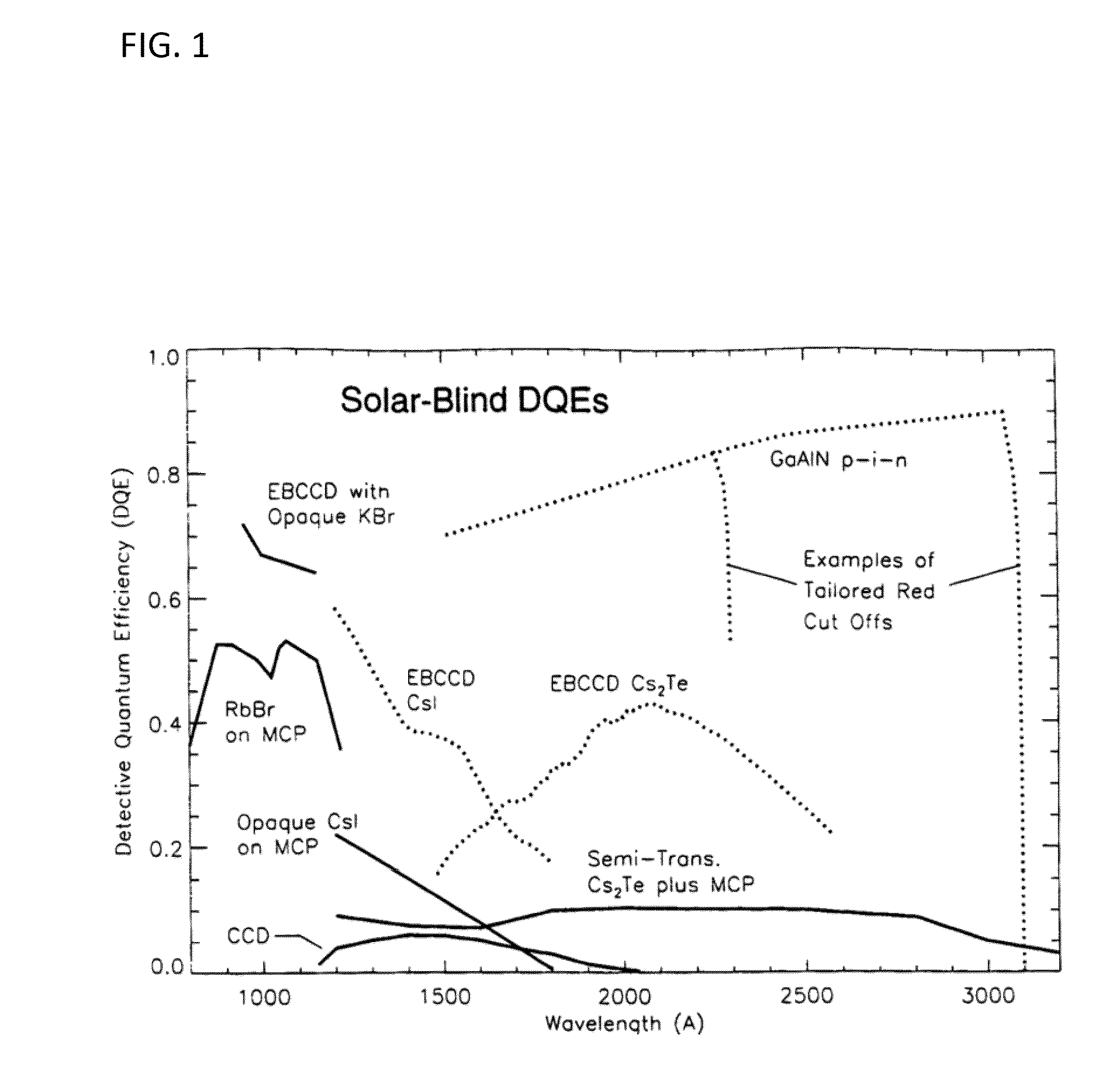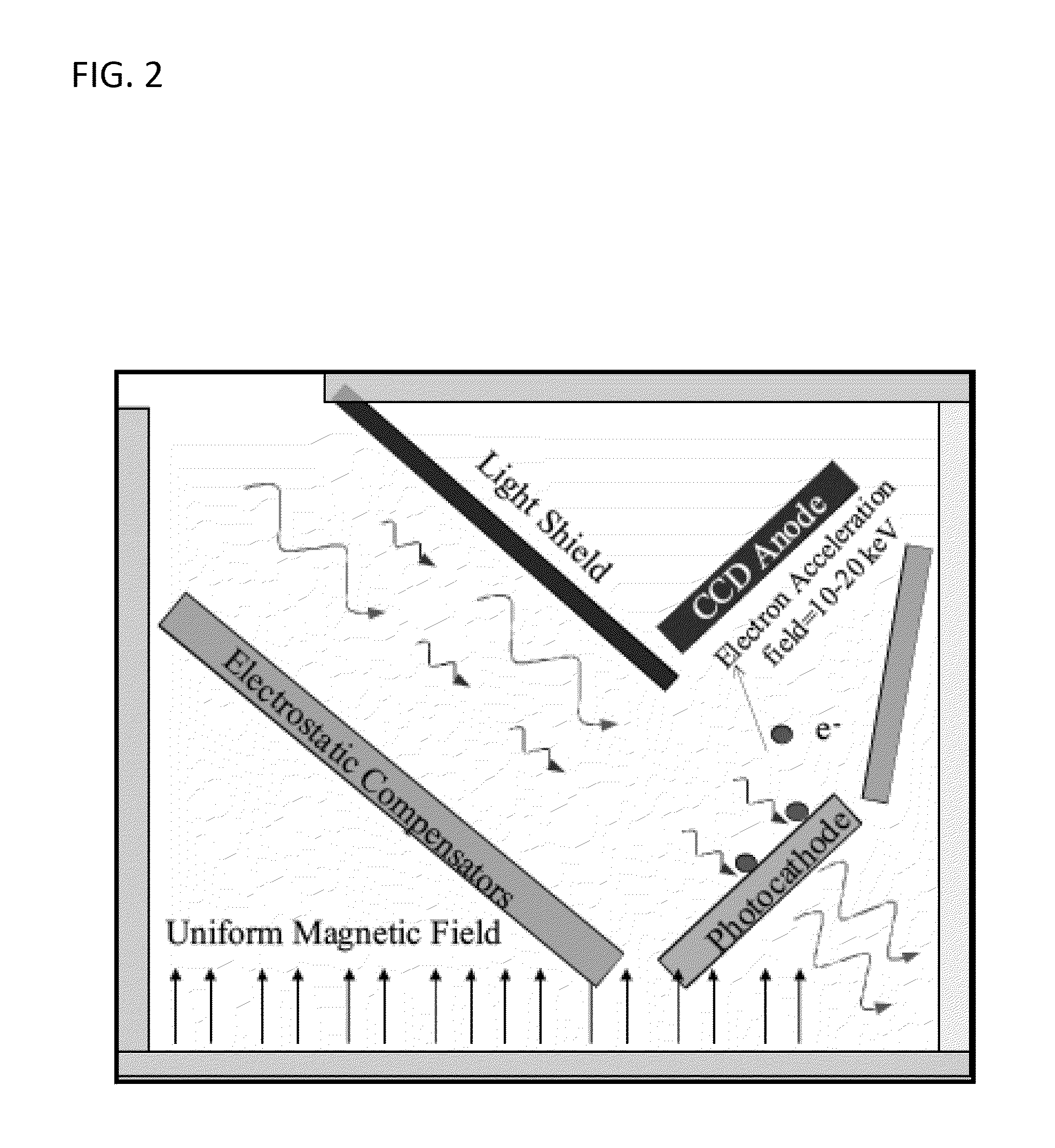Low voltage low light imager and photodetector
- Summary
- Abstract
- Description
- Claims
- Application Information
AI Technical Summary
Benefits of technology
Problems solved by technology
Method used
Image
Examples
example 1
DDCCD Detector Array
[0116]A versatile thinning approach that can accommodate detectors with various formats and structures and is compatible with die or wafer format has been developed for the production of DDCCD detector arrays in accordance with the current invention. (See, T. J. Jones, et al., Proc. Of SPIE, 3965, January (2000), the disclosure of which is incorporated herein by reference.) FIGS. 13a and b qualitatively shows the specular surface of a thinned packaged delta-doped CCD in accordance with this invention. Surface profilometry has been used to quantify the optical. flatness of the thinned CCD. Nine 10-mm scans were made across the surface of an etched CCD. FIG. 14 shows a 200-μm segment of a line scan, which is typical. of the entire etched surface. The data show a 200 Å peak-to-peak variation in the height of the etch surface. This degree of flatness is suitable for the demanding requirements of optics in space instruments.
example 2
Proximity Focusing and Visible Light Rejection
[0117]The large reduction in required electron energies to produce a detectable signal., in accordance with the current invention makes possible a radical. simplification of the conventional. EBCCD architecture. Since lateral photoelectron energies are a few eV, resolutions of 20-30 microns can be achieved with a proximity-focused design in which the semitransparent photocathode is separated from the CMOS or CCD by a few hundred microns and with a 500-1000V potential. The permanent magnet, which is used in conventional. EBCCDs, is deleted in this configuration. Thus a very compact device can be produced as shown in FIGS. 13a and b. However, one issue remains, namely, visible light rejection. In the DDEBA design of the current invention, the photocathode absorbs photons (whether UV or near-IR) producing electrons that are detected in the delta doped APS with a voltage dependent gain (typically 300). At the same time, visible photons will ...
example 3
Exemplary Applications
[0121]Examples of science objectives and classes of missions requiring UV / VUV instruments are given below. Traditionally, MCPs have been used for these applications. While these work well, they have limits, and for decades scientists have attempted the development of newer technology solar-blind UV detectors that would operate without high voltage, have low noise background, large pixel. arrays with a uniform response across the array, and not be limited by count rates as MCP detectors are locally and globally. This is now possible through the current invention. DDEBAs will enable miniaturization, simplification, and low-power consumption while improving the performance of UV / VUV instruments.
Atmospheric Detection and Composition Studies
[0122]High efficiency and compact spectrometers and imagers can be mission enabling. VUV observations of the extended upper atmospheres of all of the planets and their satellites are needed, due to the small columns of gas involv...
PUM
 Login to View More
Login to View More Abstract
Description
Claims
Application Information
 Login to View More
Login to View More - R&D
- Intellectual Property
- Life Sciences
- Materials
- Tech Scout
- Unparalleled Data Quality
- Higher Quality Content
- 60% Fewer Hallucinations
Browse by: Latest US Patents, China's latest patents, Technical Efficacy Thesaurus, Application Domain, Technology Topic, Popular Technical Reports.
© 2025 PatSnap. All rights reserved.Legal|Privacy policy|Modern Slavery Act Transparency Statement|Sitemap|About US| Contact US: help@patsnap.com



